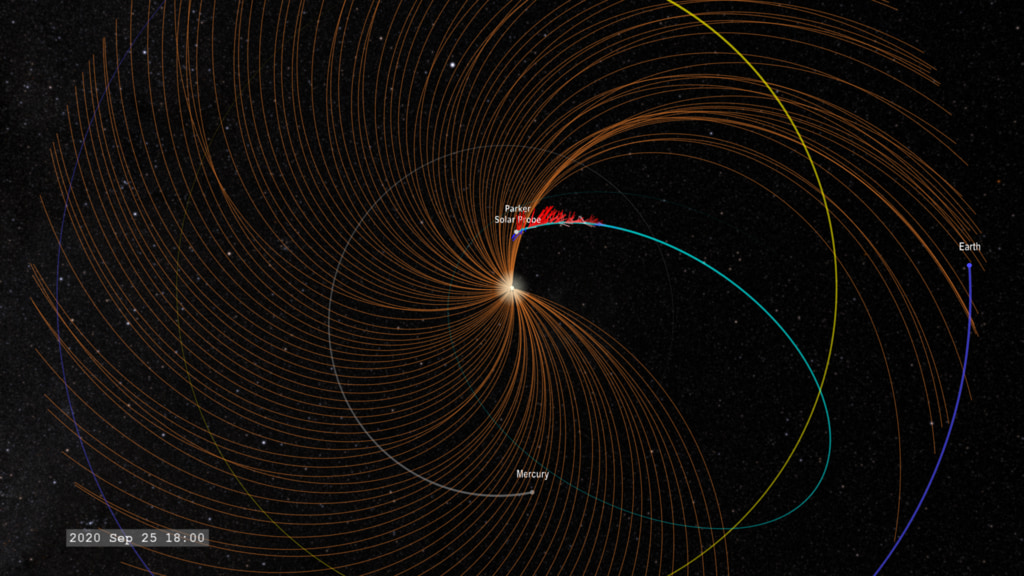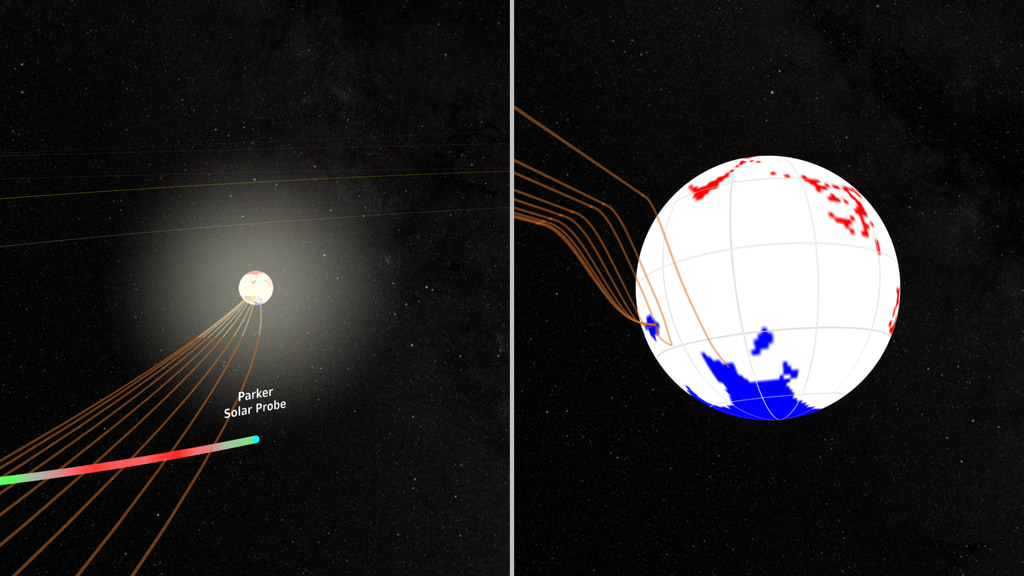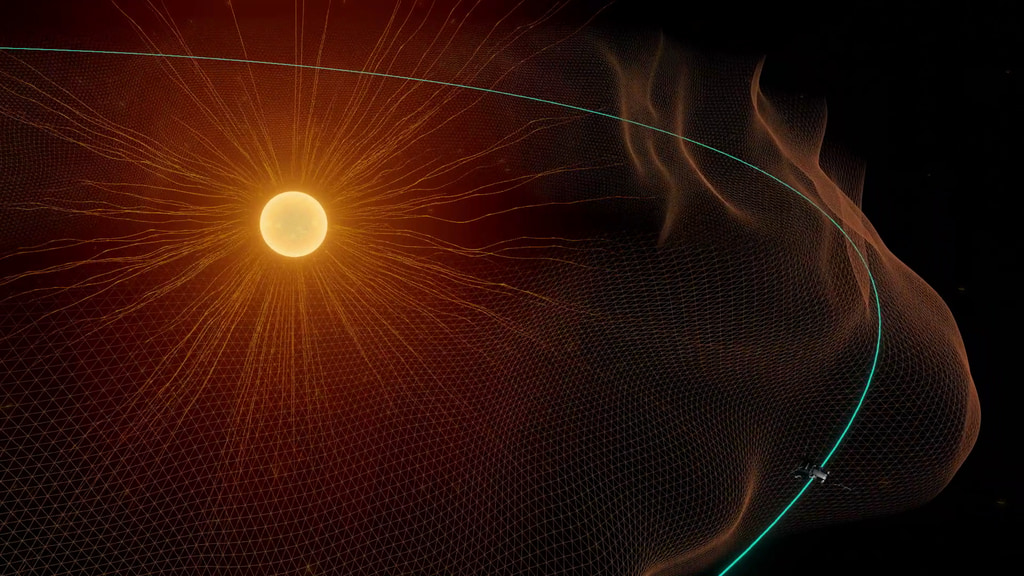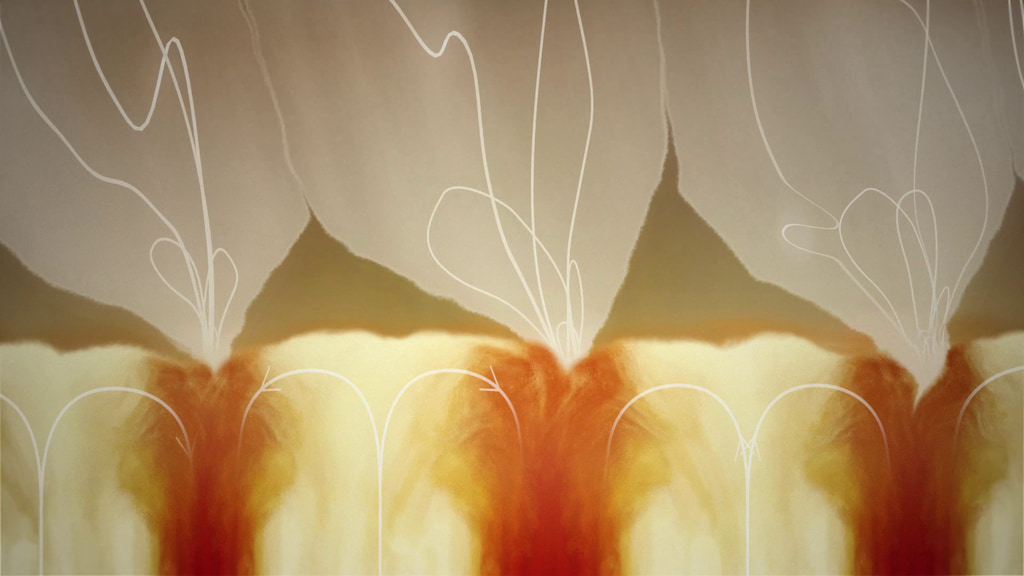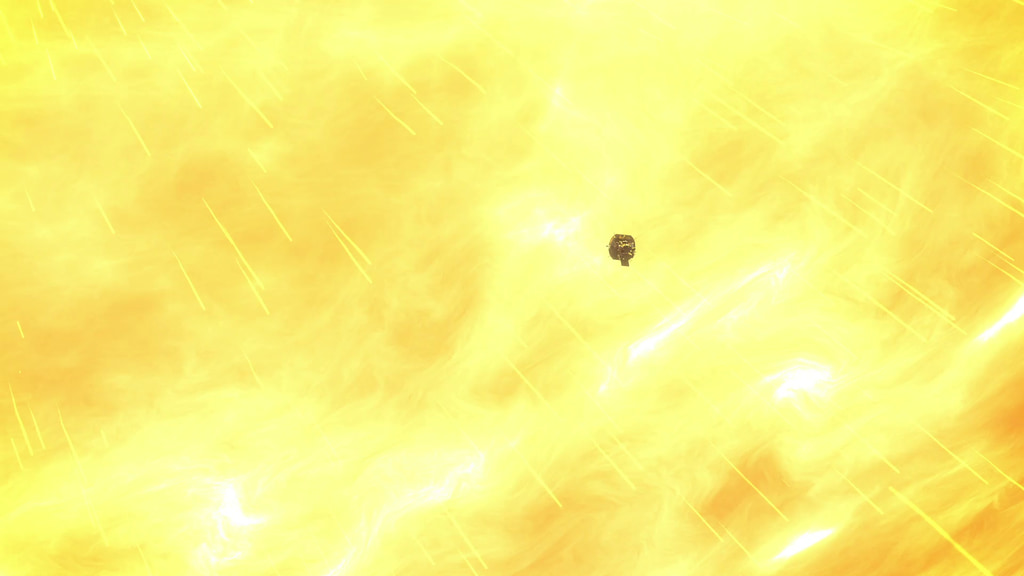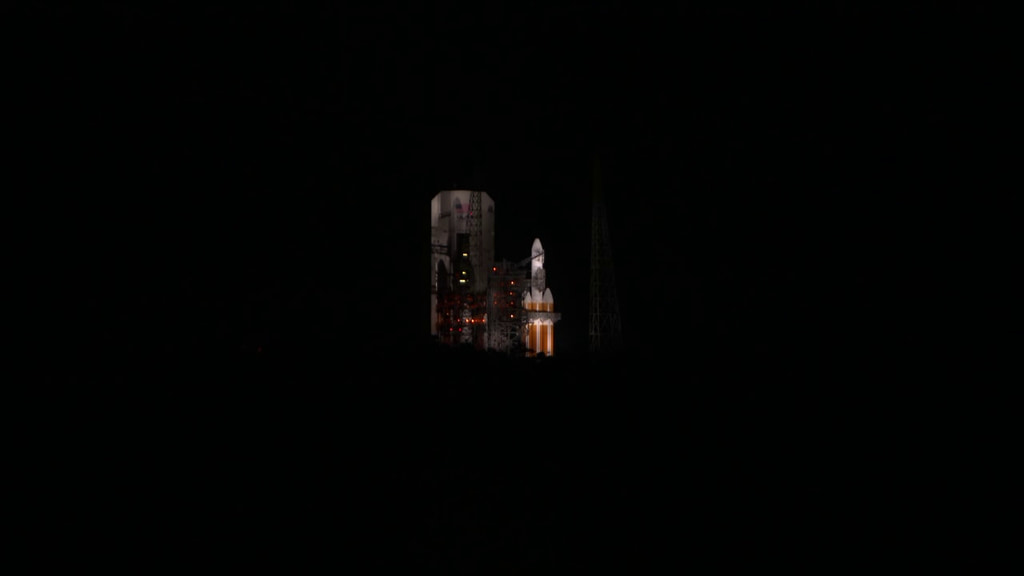Parker Solar Probe's WISPR Images Inside The Sun's Atmosphere
For the first time in history, a spacecraft has touched the Sun. NASA’s Parker Solar Probe has now flown through the Sun’s upper atmosphere – the corona – and sampled particles and magnetic fields there. As Parker Solar Probe flew through the corona, its WISPR instrument captured images.
The Wide-Field Imager for Parker Solar Probe (WISPR) is the only imaging instrument aboard the spacecraft. WISPR looks at the large-scale structure of the corona and solar wind before the spacecraft flies through it. About the size of a shoebox, WISPR takes images from afar of structures like coronal mass ejections, or CMEs, jets and other ejecta from the Sun. These structures travel out from the Sun and eventually overtake the spacecraft, where the spacecraft’s other instruments take in-situ measurements. WISPR helps link what’s happening in the large-scale coronal structure to the detailed physical measurements being captured directly in the near-Sun environment.
To image the solar atmosphere, WISPR uses the heat shield to block most of the Sun’s light, which would otherwise obscure the much fainter corona. Specially designed baffles and occulters reflect and absorb the residual stray light that has been reflected or diffracted off the edge of the heat shield or other parts of the spacecraft.
WISPR uses two cameras with radiation-hardened Active Pixel Sensor CMOS detectors. These detectors are used in place of traditional CCDs because they are lighter and use less power. They are also less susceptible to effects of radiation damage from cosmic rays and other high-energy particles, which are a big concern close to the Sun. The camera’s lenses are made of a radiation hard BK7, a common type of glass used for space telescopes, which is also sufficiently hardened against the impacts of dust.
WISPR was designed and developed by the Solar and Heliophysics Physics Branch at the Naval Research Laboratory in Washington, D.C. (principal investigator Russell Howard), which will also develop the observing program.
During Parker Solar Probe’s eighth orbit around the Sun, the spacecraft flew through structures in the corona called streamers. This movie shows that data from the WISPR instrument on Parker Solar Probe.
Credit: NASA/Johns Hopkins APL/Naval Research Laboratory
During encounters 8 and 9, Parker Solar Probe flew through structures in the corona called streamers. This movie shows that data from the WISPR instrument on Parker Solar Probe.
Credit: NASA/Johns Hopkins APL/Naval Research Laboratory

As Parker Solar Probe passed through the corona on encounter nine, the spacecraft flew by structures called coronal streamers. These structures can be seen as bright features moving upward in the upper images and angled downward in the lower row. Such a view is only possible because the spacecraft flew above and below the streamers inside the corona. Until now, streamers have only been seen from afar. They are visible from Earth during total solar eclipses.
Credit: NASA/Johns Hopkins APL/Naval Research Laboratory

As Parker Solar Probe passed through the corona on encounter nine, the spacecraft flew by structures called coronal streamers. These structures can be seen as bright features moving upward in the upper images and angled downward in the lower row. Such a view is only possible because the spacecraft flew above and below the streamers inside the corona. Until now, streamers have only been seen from afar. They are visible from Earth during total solar eclipses.
Credit: NASA/Johns Hopkins APL/Naval Research Laboratory

As Parker Solar Probe passed through the corona on encounter nine, the spacecraft flew by structures called coronal streamers. These structures can be seen as bright features moving upward in the upper images and angled downward in the lower row. Such a view is only possible because the spacecraft flew above and below the streamers inside the corona. Until now, streamers have only been seen from afar. They are visible from Earth during total solar eclipses.
Credit: NASA/Johns Hopkins APL/Naval Research Laboratory

As Parker Solar Probe passed through the corona on encounter nine, the spacecraft flew by structures called coronal streamers. These structures can be seen as bright features moving upward in the upper images and angled downward in the lower row. Such a view is only possible because the spacecraft flew above and below the streamers inside the corona. Until now, streamers have only been seen from afar. They are visible from Earth during total solar eclipses.
Credit: NASA/Johns Hopkins APL/Naval Research Laboratory

As Parker Solar Probe passed through the corona on encounter nine, the spacecraft flew by structures called coronal streamers. These structures can be seen as bright features moving upward in the upper images and angled downward in the lower row. Such a view is only possible because the spacecraft flew above and below the streamers inside the corona. Until now, streamers have only been seen from afar. They are visible from Earth during total solar eclipses.
Credit: NASA/Johns Hopkins APL/Naval Research Laboratory

As Parker Solar Probe passed through the corona on encounter nine, the spacecraft flew by structures called coronal streamers. These structures can be seen as bright features moving upward in the upper images and angled downward in the lower row. Such a view is only possible because the spacecraft flew above and below the streamers inside the corona. Until now, streamers have only been seen from afar. They are visible from Earth during total solar eclipses.
Credit: NASA/Johns Hopkins APL/Naval Research Laboratory

As Parker Solar Probe passed through the corona on encounter nine, the spacecraft flew by structures called coronal streamers. These structures can be seen as bright features moving upward in the upper images and angled downward in the lower row. Such a view is only possible because the spacecraft flew above and below the streamers inside the corona. Until now, streamers have only been seen from afar. They are visible from Earth during total solar eclipses.
Credit: NASA/Johns Hopkins APL/Naval Research Laboratory
Credits
Please give credit for this item to:
NASA's Goddard Space Flight Center
-
Producer
- Joy Ng (KBR Wyle Services, LLC)
Release date
This page was originally published on Monday, December 20, 2021.
This page was last updated on Wednesday, May 3, 2023 at 1:43 PM EDT.
